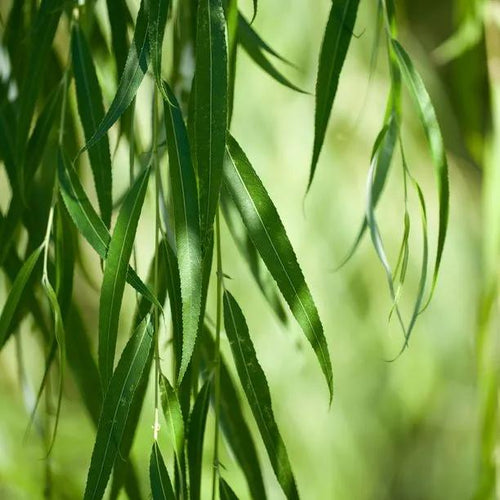Golden Weeping Willow Trees
The Golden Weeping Willow tree, Salix sepulcralis Chrysocoma, is the world's most popular ornamental weeping tree and the only weeping willow with golden-yellow stems. It has a stout, gnarled trunk when it's mature, with quite stumpy main branches that end in radiant showers of hanging, golden-yellow stems. It looks fabulous in spring, when the young leaves are still small and pale yellow-green and the yellow catkins are visible. The leaves turn green in summer and then back to yellow in autumn.
Weeping willows are vigorous and have a variable final height range. In general, trees on sheltered sites will be taller. Anywhere from 12 to 20 metres is possible.
Browse our variety of willow trees or our full range of garden trees.
Delivery season: Willow trees are delivered bareroot during late autumn and winter, approximately November-March inclusive.
Choosing a size: Small trees are cheaper, easier to handle and more forgiving of less than ideal aftercare, so they're best for a big planting project. If instant impact is your priority, or if you are only buying a few plants for use in a place where it's convenient to water them well in their first year, then you may as well use bigger ones. All our bareroot trees are measured by their height in centimetres above the ground (the roots aren't measured).
Features
- Height: 12-20m
- Soil: Almost any, but loves wet soil in full sun
- The classic waterside tree.
- Large, graceful, variable form
- RHS Award of Garden Merit
- Bareroot delivery only: November-March
Growing Weeping Willows
Willows in general thrive best on wet soil in full sun, ideally beside water, but really aren't fussy as long they have enough light. This species will tolerate chalk, but prefers acidic soil.
They respond well to pruning, and are perfect for coppicing and pollarding.
Please note: old trees have brittle wood and are likely to drop branches in a storm.
History & Trivia
This hybrid of native and Asian willows was introduced in Germany around 1888. Its parentage is a matter of debate, but it is probably an improvement of Salix alba Tristis.
Standard trees are measured by their girth in centimetres 1 metre above ground level: their trunk's waist measurement. Unlike sapling trees and hedge plants, standards aren't measured by their height, which will vary quite a bit both between and within species.
So, a 6/8cm standard tree has a trunk with a circumference of 6-8cm and an 8/10 standard has a trunk 8-10cm around. This measurement makes no difference to the tree's final height.
On average, standard trees are 2-3.5 metres tall when they arrive, but we cannot tell you precisely how tall your trees will be before we deliver them.








 Secure, One-Tap Checkout
Secure, One-Tap Checkout
 Hand Picked, Delivered to Your Door!
Hand Picked, Delivered to Your Door! 1 Year Bareroot Guarantee
1 Year Bareroot Guarantee








